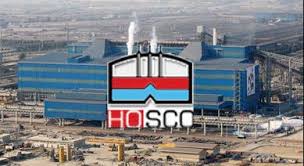
30 percent growth in Hormozgan Steel Company’s production

He presented a report on the company’s performance since its inauguration and said that Mobarakeh Steel Company (MSC) has played a vital role in inaugurating Hormozgan Steel Company and helping it initiate its production process. “MSC acquired Hormozgan Steel Company in 2011 by buying 100 percent of its shares.”
Arzani further said that the transfer of technical knowhow and experience of experts from MSC, which is the country’s largest steelmaker, played an instrumental role in the growth and progress of Hormozgan Steel Company in the sanctions era. Thanks to that, Hormozgan Steel Company is currently producing quality steel slabs in the country.
Hormozgan Steel Company accounts for 8.1 percent of the crude steel produced in Iran, he said, adding it produced more than 1 million slabs in the first nine months of the current Iranian year, posting a 30 percent increase over corresponding period last year [ended on March 20, 2017].
The managing director went on to say thanks to faith in God and tireless efforts of staff in Hormozgan Steel Company, the company will reach profitability this year, adding that due to such profitability the company will be able to make up for its accumulated losses over the past five years.
The slabs Hormozgan Steel Company produces are of the highest quality in the country, he said.
In light of the company’s share envisioned in the country’s steel outlook, it is determined to produce as much as 10 million tons of steel in the special economic zone in the province, he added.
Arzani said the company is waiting for finances to complete its expansion project(s) and added the finances will come up in the form of a $ 400 million contract.
The managing director then said the strategies formulated in the company’s different departments are as follows: raising revenues by developing exports and selling special products with higher added value; providing effective cost management; boosting customer satisfaction and creating shared value (CSV); upgrading staff safety and health; planning for and developing production capacities; expanding designing capabilities and making special products; securing timely and inexpensive finances; identifying and developing export markets; cutting production costs as well as service and consumption expenses; promoting processes in terms of quality and quantity; offering timely, economical and quality finances; developing the infrastructure as well as information and communication networks; and promoting organizational agility.


Trump weighs using $2 billion in CHIPS Act funding for critical minerals

Codelco cuts 2025 copper forecast after El Teniente mine collapse

Electra converts debt, launches $30M raise to jumpstart stalled cobalt refinery

Barrick’s Reko Diq in line for $410M ADB backing

Abcourt readies Sleeping Giant mill to pour first gold since 2014

Nevada army depot to serve as base for first US strategic minerals stockpile

SQM boosts lithium supply plans as prices flick higher

Viridis unveils 200Mt initial reserve for Brazil rare earth project

Tailings could meet much of US critical mineral demand – study

Kyrgyzstan kicks off underground gold mining at Kumtor

Kyrgyzstan kicks off underground gold mining at Kumtor

KoBold Metals granted lithium exploration rights in Congo

Freeport Indonesia to wrap up Gresik plant repairs by early September

Energy Fuels soars on Vulcan Elements partnership

Northern Dynasty sticks to proposal in battle to lift Pebble mine veto

Giustra-backed mining firm teams up with informal miners in Colombia

Critical Metals signs agreement to supply rare earth to US government-funded facility

China extends rare earth controls to imported material

Galan Lithium proceeds with $13M financing for Argentina project

Kyrgyzstan kicks off underground gold mining at Kumtor

Freeport Indonesia to wrap up Gresik plant repairs by early September

Energy Fuels soars on Vulcan Elements partnership

Northern Dynasty sticks to proposal in battle to lift Pebble mine veto

Giustra-backed mining firm teams up with informal miners in Colombia

Critical Metals signs agreement to supply rare earth to US government-funded facility

China extends rare earth controls to imported material

Galan Lithium proceeds with $13M financing for Argentina project

Silver price touches $39 as market weighs rate cut outlook

















